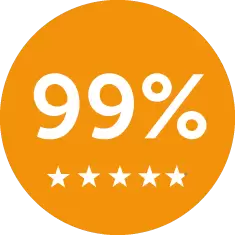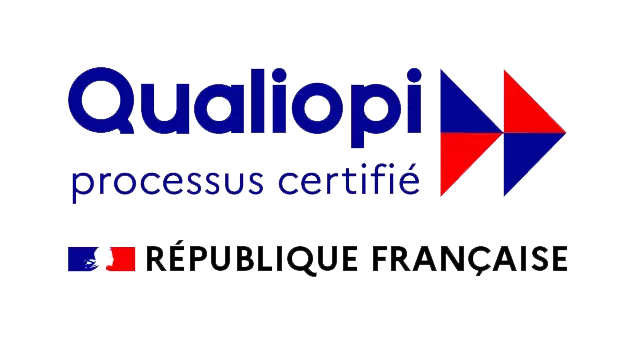Recent articles and videos
- How to improve your results as a practitioner?
- The PRS scale: a tool for measuring progress in therapy
- The systemic approach in psychiatric practice: where are we?
- How to become a psychotherapist
- NLP training and systemic approach, two complementary approaches
- How to become a therapist?
- Personal development training
- Breaking the silence around harassment
- Fight against the shadow of harassment
- Systemic approach training
- Problem Solving Scale: Assessing Clinical Improvement
- Support for people who are victims of moral harassment
- Thwarting moral harassment through a systemic and strategic approach
- A systemic approach to insomnia
- Understanding domestic violence using a systemic approach
Most Viewed Articles
- Online strategic systemic training course at LACT
- A surgeon's testimony on professional burnout
- Conflict management in business: Insurance case study
- 5 axioms of pragmatic communication (Paul Watzlawick)
- Family Caregiver: Managing Stress and Emotions at Work
- Assessment and management of PSR in business - Case study
- Bibliography
- LACT action and psychological and relational support unit
- Palo Alto's Strategic Systems Approach by Wittezaele
- BOOK "When work hurts"
Book - Change Strategies

More than 50 years ago, the research of the School of Palo Alto brought out a new model for understanding communication, change and therapeutic processes.
This work gave birth to strategic therapy, a pragmatic approach guided by two questions: what maintains the problem? What enables change? To help the patient build a new representation of his problem and get out of the impasses in which he finds himself trapped, the therapist explores with him the logic of this confinement.
He puts his inventiveness at the service of developing a new framework of experience that will be more conducive to the mobilization of the patient's resources. Many pathological situations thus find concrete answers through the implementation of change strategies that have been able to demonstrate their therapeutic effectiveness for years. For the attention of all those who engage daily in the helping relationship and the relief of psychological suffering, the authors have chosen to share their know-how through 16 prescriptions that they apply daily with their best results. , by associating the pathologies studied within the framework of the PRN (Practice Research Network) SYPRENE. They are presented in a pedagogical way around case studies and conclude with a summary in the form of an encyclopaedic file. PUBLISHER: Érès, “Relations” Collection
AUTHORS
Grégoire de Vitry is co-founder of the LACT training school which he directs, coach, trainer and therapist at LACT.
Doctoral researcher in psychology and sociology at Paris 8 and Cermes 3, he coordinates the LACT research program as well as the international training school LACT. Teresa Garcia (1958-2019), founder of CIRCÉ, was a psychologist and psychotherapist, professional coach and author, member of the New York Academy of Sciences and scientific director of LACT research.
Claude de Scorraille , psychologist and psychotherapist, co-founder of LACT and research associate, directs the workplace suffering consultation.
Olivier Brosseau is a therapist, strategic coach, trainer, associated with LACT.
Bernardo Paoli is a psychologist, psychotherapist, hypnotherapist, coach and trainer at LACT.
READERS' REVIEWS
The word may seem strong but it is p
It is therefore necessary to be strategic in our prescriptions if we want to help the patient get out of the impasse in which he finds himself. Once this approach has been properly integrated, there is still a long way to go before finding or inventing the prescriptions that will allow the development of a new framework of experience for the patient. And here again the book is very enlightening thanks to the 16 examples described and detailed by the psychologists and therapists who participated in the writing of these didactic and educational sheets. They reveal to us some of the prescriptions that have proven effective in a large number of pathological situations. Admittedly, they should not be duplicated mechanically and systematically, but I will, without a doubt, add them to my practice like new shades of color to my palette! "
Christine: "Reading this book is enlightening and I was interested in its didactic format, a kind of toolbox and this precision in the explanations which help to better understand a problem and its resolution. If it does not replace a therapeutic action, it makes it possible to better understand the mechanisms by which the problems are maintained and how the tools developed by the systemic approach manage to respond to them."
Marie : "A playful and enlightening book that gives pride of place to new strategic therapeutic prescriptions. The dissection of each of the prescriptions allows you to understand the mechanics and the theoretical foundations. I was pleasantly surprised by the technical sheet format, which gives a very functional perspective to the book and invites you to reopen it at will. The link made with other theoretical currents is very appreciable. I will undoubtedly use this book in my practice and invite practitioners of the helping relationship to discover without reservation."
Christophe : "The authors make explicit, with their personal touch, the different strategies for change that are clearly developed and can be directly applicable. This suits me personally as a professional involved in the helping relationship. This book is fluid and pleasant to read despite the highly technical nature of this field (hence "Remarkable!").
A book that will accompany me, I think, throughout my career."
Marie : "For my part, this book is fascinating, didactic and accessible to all. It is a precious help both for the student and for the practitioner. But as the authors point out" these prescriptions, however powerful they may be, cannot Nothing will achieve their goal if the speaker does not take care to calibrate his intervention on the three essential dimensions which are strategy, communication and the relationship".
Anne-Cécile : This hot brand new book struck me as the perfect Christmas gift for any good handyman: A magnificent box with quality tools, perfect, with instructions, tips and tricks for other confirmed do-it-yourselfers, various examples and models of use, precautions for use, etc.
During the introduction and the first part on the history of prescriptions, we go through a history of the sciences of psychology, psychiatry with some aspects of neuroscience.
Sensitive to epistemology and scientific rigor, I appreciated the contextualization of the movement of the strategic systemic approach which is part of brief interventions. What particularly interested me was the touch, the color, the taste of the practice of the strategic approach: The speaker adopts a grid for reading and questioning very specific situations.
Some excerpts: “The assumption is that if the patients had implemented effective strategies to deal with a problem, it would not exist.
“ The real problem must be sought not in the origin of the frustrations, but in what people are doing ineffectively to resolve the situation”
“The problem is the solution” Paul Watzlawick
The work with the client - expert in his problem - is based on the relationship, communication and strategy triptych.
For this the speaker - expert in the processes of the problem - gets in touch with the client and develops precise communication as well as a range of very creative techniques. This book precisely has the ambition to bring together the most emblematic techniques of the approach with exposure for each sheet of one or more situations, associated scientific references, technical details specific to the tool-technique.
The importance of the choice of words during prescriptions is underlined by offering several variants, the precision of definitions, words and expressions... And the icing on the cake, the Lact MRI school in Palo Alto relies on a network of professionals and collects thousands of data on the practices and methods to be used in order to perfect the effectiveness of these interventions. On a personal and professional level, this book is a great help, sheet by sheet, to shed light on problem-situational functioning and find new tips and approaches to manage and resolve these difficulties.
The book is centered on the intervention with client-patient, but the systemic approach allows with this book to develop a new vision of support strategies with organizations. Clearly, you will have understood, for me this book is not a showcase book. Nor is it a book you read only once. It is a book that is underlined, sketched, post-itified, opened and closed to find this or that reference.
This is a book that will be used again and again.
You can find the book on Amazon

Illustration by Anne BORAUD



